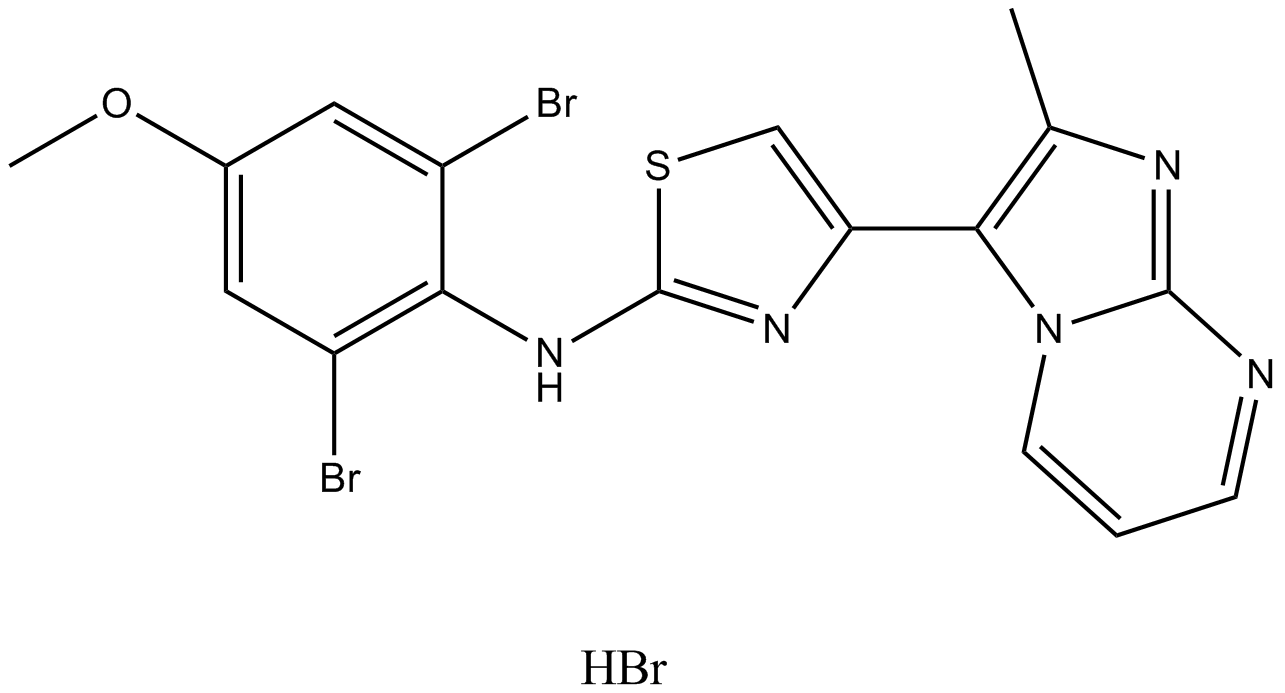PTC209 HBr |
| Catalog No.GC12147 |
PTC209 HBr은 HEK293T 세포주에서 IC50이 0.5 μM인 특정 BMI-1 억제제입니다. PTC209 HBr은 결장직장암 개시 세포(CIC)를 비가역적으로 손상시킵니다. PTC209 HBr은 강력한 항골수종 활성을 나타내고 종양 미세환경을 손상시킵니다.
Products are for research use only. Not for human use. We do not sell to patients.

Cas No.: 1217022-63-3
Sample solution is provided at 25 µL, 10mM.
PTC-209 HBr is the hydrobromide salt of PTC-209, a potent and selective BMI-1 inhibitor (IC50 = 0.5μM). It irreversibly impairs the colorectal tumor growth. [1]
BMI-1 is a component of polycomb repressive complex 1 (PRC1) and act as an epigenetic chromatin modifier for a variety of genes. [1]
PTC-209 inhibited both UTR-mediated reporter expression and endogenous BMI-1 expression in HCT116 (human colorectal cell) and HT1080 (human fibrosarcoma tumor cell) in a dose dependent manner. In addition, the inhibitory effect of PTC-209 was not from its cytotoxicity. PTC-209 also specifically reduced PRC1 activity. [1]
Viable colorectal cancer cell samples treated with PTC-209 ex vivo were injected back to the recipient mice in vivo, the mice exhibited reduced or no tumor growth comparing with the control groups. Thus PTC-209 irreversibly impaired colorectal cancer-initiating cells. Furthermore, in contrast with the control groups, tumor volume was significantly reduced in the colorectal tumor cell transplanted mice following PTC-209 administration. [1]
References:
[1] Kreso A, van Galen P, Pedley NM, Lima-Fernandes E, Frelin C, Davis T, Cao L,Baiazitov R, Du W, Sydorenko N, Moon YC, Gibson L, Wang Y, Leung C, Iscove NN,Arrowsmith CH, Szentgyorgyi E, Gallinger S, Dick JE, O'Brien CA. Self-renewal as a therapeutic target in human colorectal cancer. Nat Med. 2014 Jan;20(1):29-36.
Average Rating: 5 (Based on Reviews and 10 reference(s) in Google Scholar.)
GLPBIO products are for RESEARCH USE ONLY. Please make sure your review or question is research based.
Required fields are marked with *




















